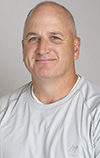This article was #24 of the Top 25 most well-read articles on www.progressivedairy.com in 2012. to jump to the article. It was published in the March 10, 2012 Extra. Click here for the full list of the Top 25. While attending the 2012 World Ag Expo, Progressive Dairyman Publisher Alan Leavitt attended a “Procross” three-way crossbreeding tour hosted by Creative Genetics of California, Inc. Leavitt’s photo slideshow features crossbred cows with Swedish Red, Montbeliarde and Holstein genetics. We asked Creative Genetics owner Mike Osmundson to respond to a few follow-up questions:
Q. Why is crossbreeding seemingly increasing in popularity among dairy producers? What advice do you have for a producer wanting to experiment with crossbreeding perhaps part of his herd?
Crossbreeding has been a ‘dirty’ word in dairy circles for more than six or seven decades. Yet, today we enjoy a new rush of inquiries into crossbreeding. Why?
First, let’s look at today’s total dairy picture compared to that of the last 60 years. Today’s dairymen are in a high-risk business that has very low returns on the money invested. There isn’t any room for mistakes or extra expenses.
Fifty years ago the dairy business was a “way of life,” without too much stress when it came to the money part of it. If you worked hard and paid attention, you were successful.
Dairymen in 2013 and beyond will need to not only make money from milk sales but also from beef cow sales, bull calf sales, surplus heifer sales and reduced input and feed costs. Today’s dairymen cannot afford to spend extra money on such things as sexed semen just to maintain replacement numbers, extra vet expenses, forced culling, poor reproduction or buying extra replacements.
The number one reason for the increasing popularity among dairy producers in crossbreeding seems to be based around a “search” for profitability. Most of them are surprised by the advantages of crossbreeding when they experience it or visit us and see it.
With the Procross system, we do sell heavier cull cows for a higher average price, we do have faster gaining bull calves that bring higher prices, we do have surplus heifer sales without the use of sexed semen, we do have lower vet expenses than the average dairy, we do have less feed expense – and the list goes on. All of this without losing production – it is a winner.
If I was a dairyman, I would not want to experiment with crossbreeding, I would just do it. I would check out the various programs (with an open mind), decide which one looked the best for my operation, decide if I wanted to do it 100 percent, 60 percent, 35 percent or zero percent of my herd and then do it.
Most of the experimenting that is done with crossbreeding on your herd only becomes just that, an experiment and nothing else. You must be convinced and then committed.
—Mike Osmundson, Creative Genetics of California, Inc.
ARTICLE :

Dairy producers and crossbreeding enthusiasts from around the world took the opportunity again this spring to do the old "two birds with one stone" thing — in this case, enjoying World Ag Expo in Tulare, California, followed the next day by a "Procross" three-way crossbreeding tour hosted by Creative Genetics of California, Inc .
or scroll down to see a photo slideshow from the event.
Creative Genetics and owner Mike Osmundson have been successfully implementing Swedish Red, Montbeliarde and Holstein crossbreeding into dairy herds worldwide for nearly 15 years, with increased heterosis, calving ease, locomotion, feed efficiency, milk components and other benefits being seen by dairies incorporating the breeding approach. A common remark during the three stops by dairymen using this approach is that improvements can be seen in just one generation — much faster genetic progress than the traditional same-breed approach.The tour, held Friday, Feb. 17, included stops at three dairies who have successfully been implementing three-way crossbreeding into their operations for the past 12-13 years. Stops were made at Prin's Dairy in Modesto, California; Crane Villa Dairy in Oakdale, California; and Hoekstra Dairy in Oakdale, California.
Lunch was provided at the second stop during the open house, and the evening was topped off with a mouth-watering banquet dinner at a local steakhouse.
Attesting to the growing popularity and international interest in crossbreeding, tour participants hailed from Germany, France, Sweden, Denmark, Canada, Spain and the U.S.
This year marked the 6th annual tour hosted by Creative Genetics of California, Inc. Mark your calendars for next year's tour, tentatively scheduled for Friday, Feb. 15, 2013. PD
Photos by Alan Leavitt.

Alan Leavitt
Publisher
Progressive Publishing
alan@progressivepublish.com
PHOTOS




